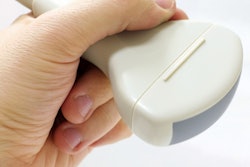Wednesday, November 28 | 3:00 p.m.-3:10 p.m. | SSM10-01 | Room E353A
Adding contrast-enhanced ultrasound (CEUS) to conventional ultrasound improves the accuracy of diagnosing intratesticular lesions -- even among clinicians with a range of experience with the technology, researchers from London will report in this Wednesday presentation.Presenter Dr. Cheng Fang of King's College Hospital NHS Foundation Trust nd colleagues found that adding CEUS helped clinicians with various levels of experience differentiate between neoplastic and nonneoplastic intratesticular tissue.
The study included seven radiologists divided by experience who reviewed 91 testicular B-mode/color Doppler images of lesions taken between 2008 and 2013. The readers then viewed the Doppler images again a month later with the addition of CEUS images. The readers rated each lesion on a five-point scale (1 = definitely nonneoplastic, 2 = likely nonneoplastic, 3 = unclear, 4 = likely neoplastic, and 5 = definitely neoplastic).
Fang's group then compared reader lesion rankings with histological results or follow-up ultrasound.
Adding CEUS improved specificity, positive predictive value (PPV), and accuracy, but it slightly reduced sensitivity, the researchers found:
- The specificity of CEUS was 73.7%, compared with 54.9% for ultrasound alone.
- The PPV for CEUS was 77.6%, compared with 67.8% for ultrasound alone.
- The accuracy for CEUS was 81.6%, compared with 74.1% for ultrasound alone.
- The sensitivity of CEUS was 89.4%, compared with 92.3% for ultrasound alone.
Fang and colleagues also found that adding CEUS images improved diagnostic specificity and accuracy for both experienced and inexperienced readers:
- Experienced readers: CEUS had a specificity of 71.1% and accuracy of 83.5%, while ultrasound alone had a specificity of 59.3% and accuracy of 76.9%.
- Inexperienced readers: CEUS had a specificity of 75.6% and an accuracy of 80.2%, while ultrasound alone had a specificity of 51.7% and an accuracy of 72%.
Adding CEUS to conventional ultrasound helps distinguish between benign and malignant prostate lesions -- and could help patients avoid unnecessary surgery -- and it also improves reader performance, the group concluded.
"The addition of CEUS ... significantly improves the accuracy of subjective interpretation for both experienced and inexperienced blinded observers," the researchers wrote.




















